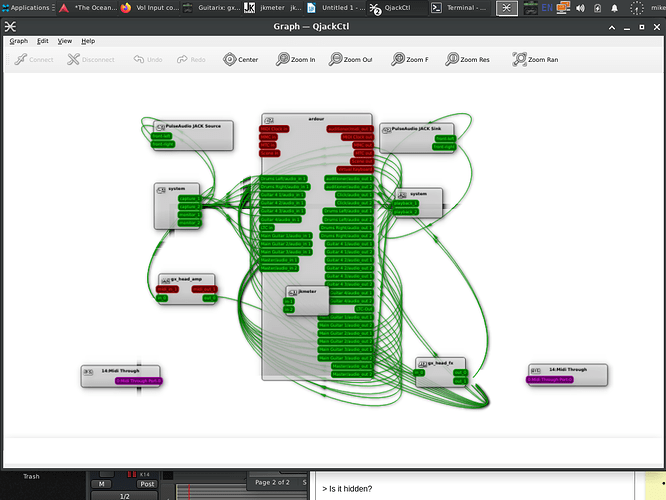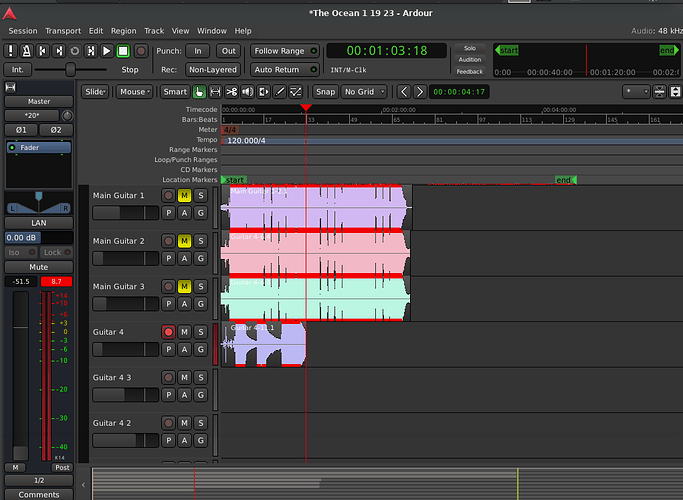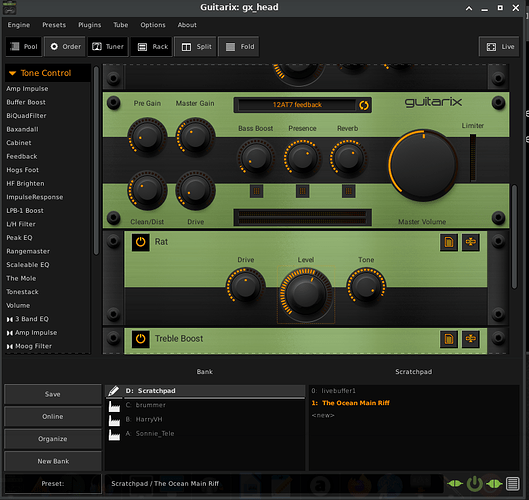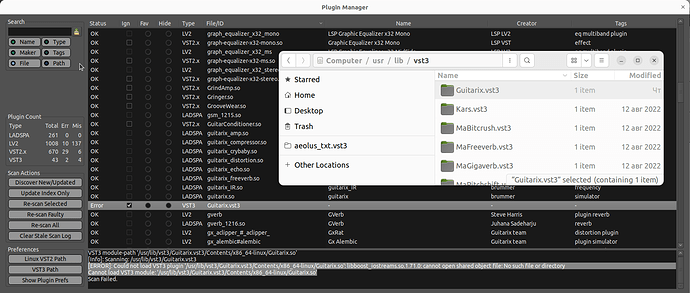Mark66250
I was using this setup, the same way I was using Cubase on Windows.
You used JACK and Guitarix on Windows? That would be uncommon."
WTF?
You don’t really want me to respond to that.
I have used Line 6 Gear Box and Pod Farm with Cubase for years.
Easy to control input signals.
" [quote=“Mark66250, post:10, topic:108251”]
I first had the M-Audio output adjustment knob on 10, then 5, then close to 0. You can see the breaks in the track as I did the adjustments.
It seems to make no difference.
[/quote]
That is not correct at all, and from the appearance I would say you wrote backwards of what you actually did, it is not 10 to 0 left to right, it is 1 to 10 left to right."
Perhaps I did write it backwards. Perhaps I turned the control right to left. I went the full range of that control, which shows it was not that control.
I am still listening…
I am fascinated with psychology, if you have no clue how to ultimately solve the problem, it’s ok to say so. I am good with it.
When I start to see irreverent nitpicking, it tells me something.
I am not a master of this software, and it is why I was asking on this forum.
"Look at the shape of the waveform after the initial pluck (which does clip on all three examples).
The first section falls away pretty quickly, then has a gentle curve downward in level. The second does not fall nearly as far in level, and the curved section is much higher in level than the first section The third section it doesn’t fall at all for quite a while, then it is almost a straight line down rather than a curved fall off in level.
I would expect that to sound quite bad if you listened to the “clean” guitar signal (which won’t actually be clean when it is clipping that hard).
I would suggest setting up a new session just for checking, only add one track, and don’t connect Guitarix at all. Work on getting a setting that has an actual clean guitar tone, no clipping from the interface."
Yes, this is a helpful approach. Thank you.
I am just baffled, as I never had any problems like this with any other DAW on any other platform I ever used. I don’t know why this system is so finicky.
“If you have passive pickups, and it still clips with the interface gain at 1, you will have to roll back the guitar volume control to lower the level.”
No, not using the guitar vol knob to get the DAW under control. Thats bullshit. Guitar vol knob, is essentially a tone control.
"If you have active pickups or an onboard pre-amp (or onboard EQ, that is effectively a pre-amp) then try the line input on channel 1 instead of the instrument input.
No onboard anything. Just a Telecaster, Les Paul and Strat, going straight in to interface.
“Once you have the gain adjusted properly for your clean guitar input, then you can add in Guitarix and get the levels optimized there.”
I do agree with this approach, and I will try it, it makes sense.
I am trying for a higher gain, lower distortion sound. But I have run the gamut with all the controls, from Off to Full On, every control on everything, and the signal is still showing blown up in the editor. I still get this visual, with the gains turned way down.
My gut tells me none of this should be this finicky. That there is one root source of this problem, and I think it is the input signal from the M-Audio that needs to be tamed down. I think the rest is an attempt to tame it after the fact.
But I will try anyway, what you mentioned above, get the dry signal tamed, if that is possible, then layer on the processing. This seems logical.
The specs for that interface indicate that the maximum input level for the instrument input is 6 dBu, which is about 1.5V. A typical passive guitar output would have less than 1/10th that level, so I am doubtful that the problem is actually with your interface. The JACK graph was pretty much unreadable,"
LOL! Yeah, someone complained they had no idea how I was connected, so I put that up. You’re welcome.
“but if that track was actually the output of Guitarix then you have the gain structure of Guitarix off from what it should be.”
LOL! Yeah, you think?
With all gains almost off, I still get that.
If you are trying to get a really high gain crunchy sound then it might be a simple as turning down the output level control on the amp simulator."
LOL! Yeah, you know, That was actually the very first control I reached for, weeks ago.
I actually tried moving every single control knob, on everything, just to see what affect it had, BEFORE I even thought of asking on a forum.
The brick wall was what brought me here.
I think it boils down to this, this is either a super finicky system, (Doubtful).
Interface is not right. I got the M-Audio Brand new for $73.00
Or … CODE, is fucked.
Ardour and Guitarix both stopped working after I downloaded more LV2 and VST programs from the Debian Repository.






